Power adapters play an indispensable role in the electronics field,. They serve as a bridge that converts one form of electrical energy to a controlled and stable source for the electrical device, ensuring devices function efficiently and safely. Despite their importance and rigorous design, they are not exempt from regulatory supervision. In fact, given their critical role, they are often under stringent regulations to ensure the end user safety and environmental conservation. As for the engineers designing the power adapter, they must consider several categories of regulatory considerations. The three primary types of regulatory issues to focus on are below:
1. Safety Standards and Certifications
2. Electromagnetic Compatibility
3. Energy Efficiency Regulations
Safety Standards and Certifications
The International Electrotechnical Commission (IEC) is a global organization responsible for establishing and publishing international electrical, electronic, and related technologies standards. By offering a uniform set of standards, the IEC helps manufacturers, consumers, and regulatory bodies have a common understanding of the technical specifications and requirements for electrical goods and services. For instance, The IEC 62368 standard is an internationally recognized safety standard for Audio/Video, Information and Communication Technology Equipment. It was issued by the International Electrotechnical Commission (IEC). This standard has different modified editions practiced across various regions worldwide.UL62368 is the adoptive standard in the USA, EN62368 is in the European Union, while in China, the corresponding measures are GB 8898 and GB 4943.
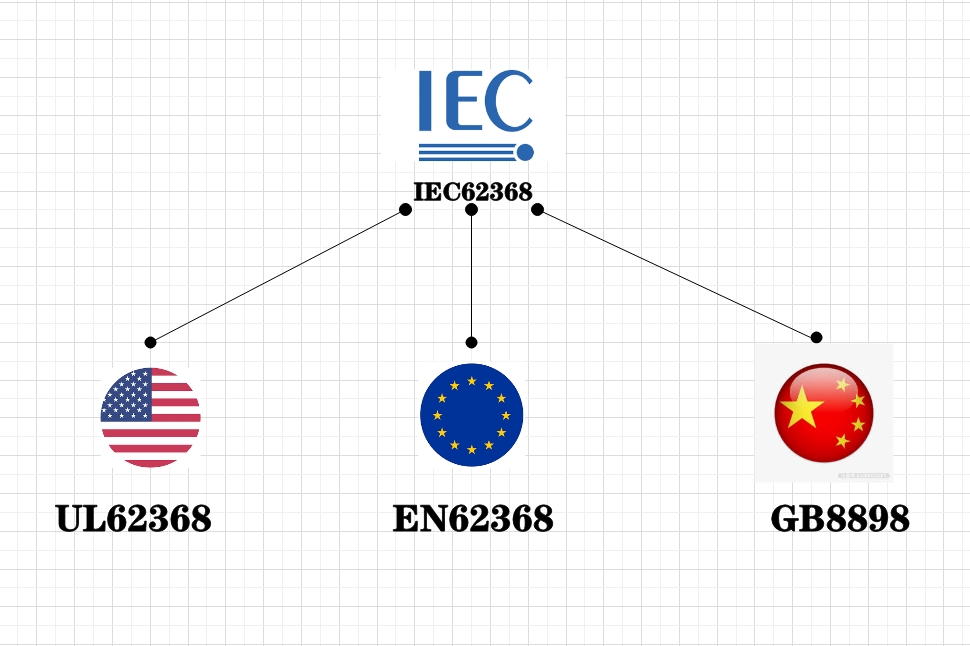
The following information provide a glimpse into major safety standards for power adapters.
1. IEC 62368 - Safety of Audio/Video, Information and Communication Technology Equipment
2. IEC 60601 - Safety of Medical Electrical Equipment
3. IEC 60335 - Safety of Household and Similar Electrical Appliances
4. IEC 61347 - Safety of lamp controlgear
5. IEC 61558 safety of Transformers, reactors, and power supply units
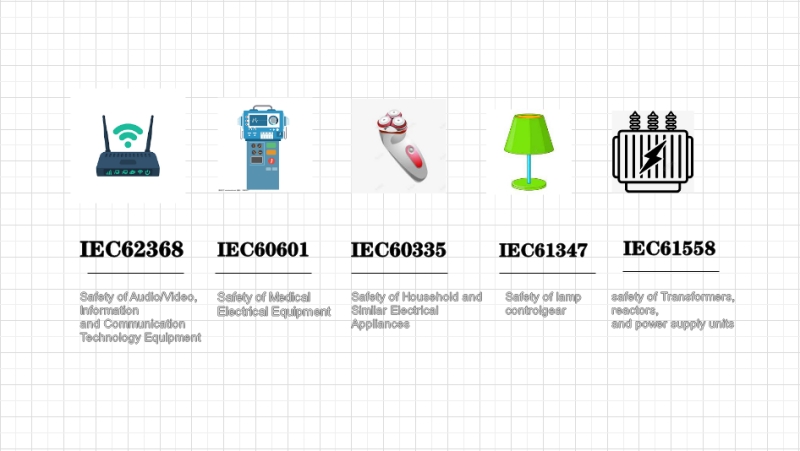
We need to consider the following critical step: Understanding the target countries where the end devices will be sold is essential for ensuring that the power adapter meets specific regulatory variations for each location. Different regions and countries have an additional certificate, such as UL marking belonging to the USA and CE for the EU, while in China, it is a CCC certificate. For more details, please check the below tabet.
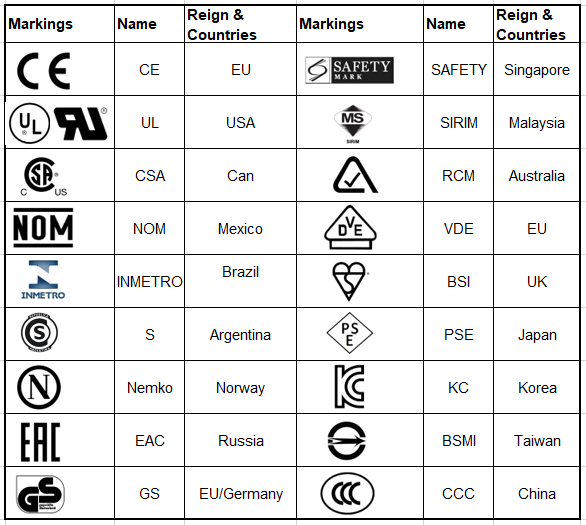
Electromagnetic Compatibility
EMC, or Electromagnetic Compatibility, is the ability of a device or system to function correctly in an electromagnetic environment without introducing intolerable electromagnetic disturbance to anything in that environment. To ensure low carbon emission levels and adequate resistance to external interference, the devices must comply with established EMI and EMS standards.
EMI, or Electromagnetic Interference, is the term for undesired electrical circuit disturbances originating from external electromagnetic sources. These disturbances can disrupt, degrade, or limit the adequate performance of a circuit, causing malfunctions or complete failures.
EMS, or Electromagnetic Susceptibility, on the other hand is refers to the ability of a device operate as intended in an electromagnetic environment without introducing electromagnetic disturbances that affect its own operation or that of other devices.
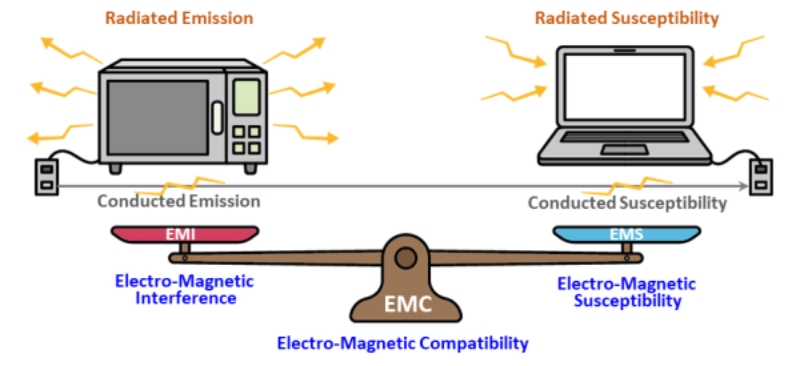
Here are some aspects of EMC testing for a power adapter,which including the Conducted Emission testing,Raditate Emission testing, Electrostatic Discharge(ESD) testing, Surge testing and so son. EMC testing is also a regulatory requirement, and products must meet specific standards before they can be sold.
Energy Efficiency Regulations
Energy efficiency is critical in selecting a power adapter, attracting more attention from both design and market. There are some aspects to consider when evaluating efficiency. These include the input power needed to run the device and how much heat is generated due to inefficiencies in power conversion. Additionally, regulations often focus on the power consumption of a device when it's not in active use, known as "no-load draw." These considerations are especially relevant for external power supplies, commonly referred to as external adapters, frequently subject to energy efficiency regulations. In the USA, the Department of Energy (DOE) established energy efficiency standards for various types of equipment, including power adapters. The power adapter must meet the energy efficiency criteria to be sold in the USA. Roman numeral markings will be listed on the adapter to signify its efficiency level if acceptable. In the European Union, power adapters are subject to the Code of Conduct (CoC)and Ecodesign requirements on energy efficiency. Australia also has its energy rating labeling and Minimum Energy Performance Standards (MEPS). Energy efficiency is crucial not only for external adapters but also for internal or embedded power adapters. Though they may not be as heavily regulated as external adapters, their efficiency is still vital for meeting some standards.

Challenges in Complying with Regulations
Compliance with power adapter regulations poses various challenges for design engineers, mainly due to the ever-changing global standards. There are some technological constraints that the power adapter is facing as below list:
1. Efficiency vs. Cost: High efficiency often requires more advanced components and technologies, increasing costs.
2. Miniaturization: As devices become smaller, achieving high energy efficiency within a compact shape becomes increasingly challenging.
3. Heat Dissipation: Higher efficiency often needs to improve heat management, which can be complicated in small or tightly integrated systems. Above constraints
Developing a suitable solution to find a point to balance them is essential.
Importance of Selecting Certified Power adapter
Non-certified power adapters can bring serious safety risks, such as fire and electrical hazards. In contrast, Certified power adapters are subjected to stringent quality tests for higher reliability and lower failure rates. Moreover, these adapters often exceed minimum efficiency standards, saving energy and lowering carbon emissions. Certified products usually ensure the best customer support and warranty services, bringing peace of mind to end consumers.
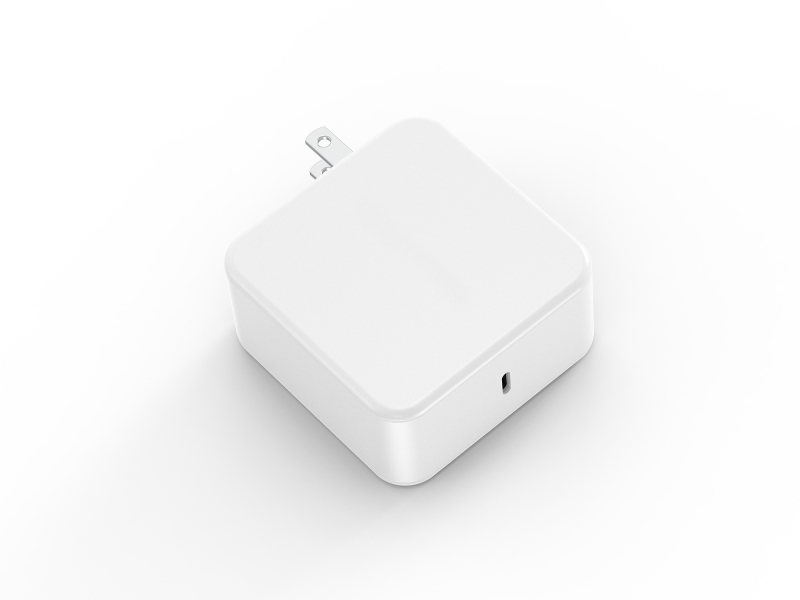
Conclusion
Navigating the complexities of regulations can be challenging; it’s important to note that AiecoPower power adapters are designed to comply with the latest safety standards and meet global EMI/EMC and efficiency requirements. Stablepsu's adapter is the most solid support for your business. If you have any more questions, please feel free to send your questions to us. Thanks for your kind visit.








